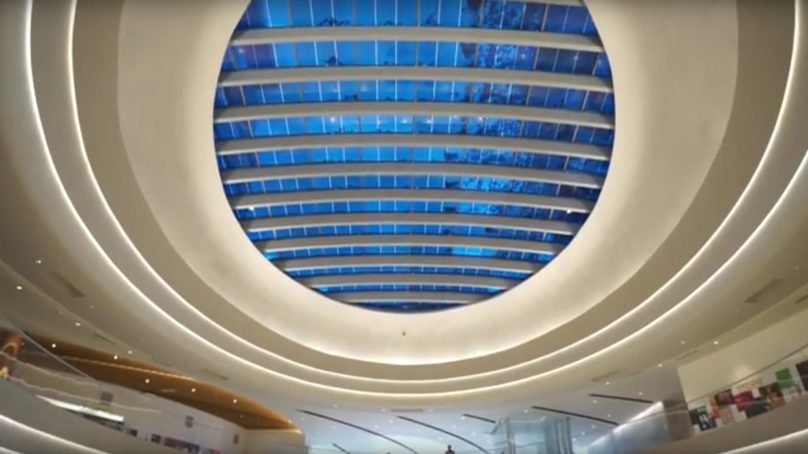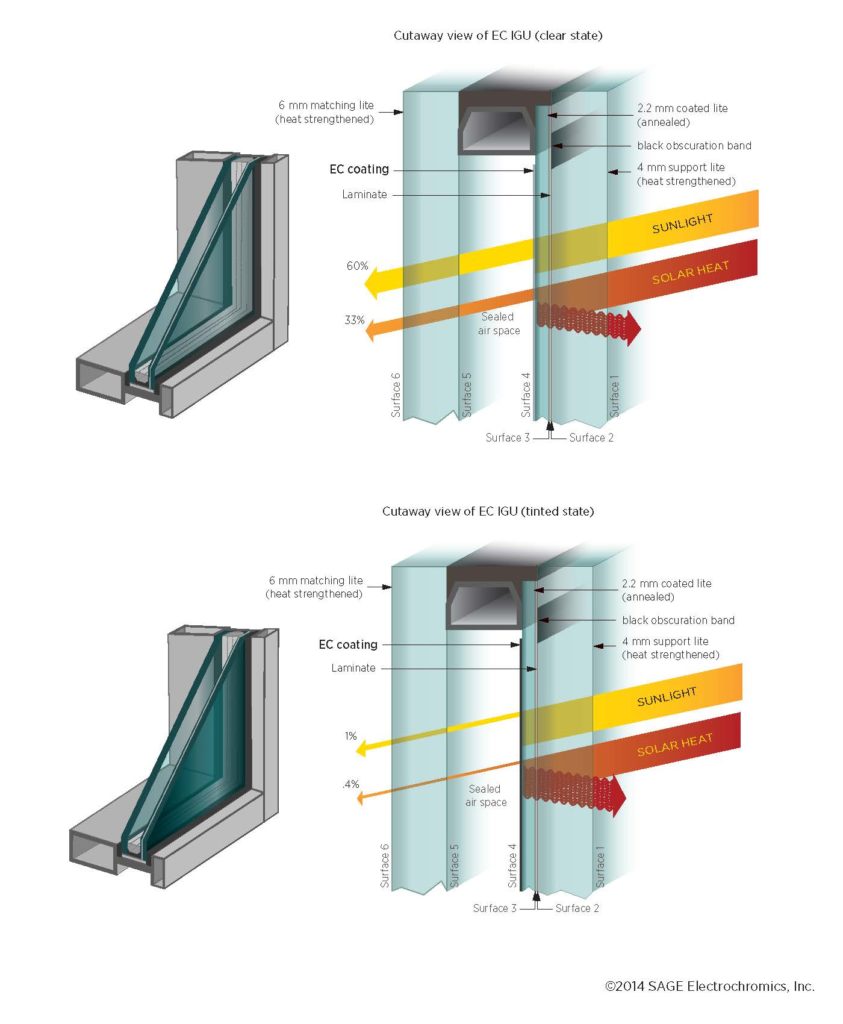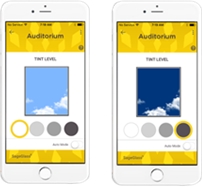
One of the most important features in a building is also one that we tend to look right through—the window. Windows have been incorporated into structures since the 13th century BC, and just like everything else, they’ve evolved over the course of centuries to meet the needs of modern man. In today’s world, the average person barely notices the windows surrounding them at their work, school or home each day. Windows have always been there, and most people don’t think twice about the impact they have on their daily life, but it’s time for that to change.
When architects and owners are designing a building, the placement, quantity and size of windows are some of the most important factors. If you’ve ever been in a space that’s windowless, you likely immediately noticed the negative impact on your mood. Most people don’t want to sit in a dark room all day, nor do they want to be blinded by sunlight or burning up from the heat. They want the perfect balance, but too often, designers elect to eliminate the sun’s glare and heat by covering windows with blinds and shades, which also eliminates natural light and views of nature.
What many don’t know is that daylight and outdoor views are crucial to human health and well-being. In fact, access to daylight has been shown to significantly improve productivity and reduce absenteeism in office settings and increase healing rates in healthcare environments. Incorporating the right mix of windows and daylight in a building is critical, not just for occupant comfort and overall well-being, but also for reaching a building’s energy-efficiency goals.
Building sustainably is no longer a nice-to-have—it’s a must. Windows play a huge role in reaching standards like the U.S. Green Building Council’s Leadership in Energy and Environmental Design (LEED®). It can be a significant design challenge for architects to include large expanses of windows to flood a space with natural light and views for occupants and still meet energy performance goals. But there is a dynamic solution.
Over the last 20 years, new window technologies have transformed the indoor experience, allowing access to pleasant vistas and daylight without blinds or shades and without compromising energy-efficiency.
Electrochromic Glazing Revolutionizes the Window
Electrochromic (EC) glazing has transformed the traditional window into a dynamic window, thanks to pioneers like SageGlass. EC glass can be darkened or cleared with the touch of a button, allowing for unobstructed views of the outdoors and superior sunlight control, without the need for blinds or shades. For the building occupant, controlling EC glass is simple, but the science behind this revolutionary product is extraordinary.
SageGlass’ electrochromic coating consists of five layers of ceramic material. Applying a low voltage of electricity darkens the coating as lithium ions and electrons transfer from one electrochromic layer to another electrochromic layer. Reversing the voltage polarity causes the ions and electrons to return to their original layer, causing the glass to return to its clear state.
SageGlass nanotechnology incorporates layers of coatings on glass, which in total are less than 1/50th the thickness of a human hair. The coatings are applied using sputter deposition, which is a tried-and-true low-risk manufacturing process that has been used for decades to manufacture millions of square feet of low-e glass. The transparent conductor (TC) layers form a sandwich around the EC layer, the ion conductor (IC), and the counter electrode (CE). Applying a positive voltage to the TC in contact with the CE causes lithium ions to be driven across the IC and inserted into the EC layer, while a charge-compensating electron is extracted from the CE, flows around the external circuit and is inserted into the EC layer. After applying the coatings, the glass is fabricated into industry-standard insulating glass units (IGUs), which can then be installed into frames.

Figure 1. Example of the configuration of an electrochromic (EC) dual-pane insulating glass unit.
The EC glass can be varied from 1% visible light transmission/0.09 solar heat gain when fully tinted to 60% visible light transmission/0.41 solar heat gain when fully clear. The glass can also be programmed with two intermediate states, such as 18% and 6% visible light transmission—these two states often provide the optimal shading effects when fully clear or tinted are not necessary. An average-sized pane of SageGlass transitions across 90% of its dynamic range (from clear to tinted or from tinted to clear) in just 7-12 minutes. However, the switching speed depends on a number of factors, including the ambient temperature and glass size.

Figure 2. Summary of performance specifications of SageGlass standard glazing.
Change Tints with the Touch of a Button
EC glass changes tint when it receives a command from the control system. The electronics of the system are housed in control panels within the building and have been pre-programmed with the algorithms that carry out the commands that best meet the requirements of the building. The control system includes advanced tools to manage daylighting, color rendering, energy usage, and glare based on occupancy and light levels. EC glass can be tinted and cleared using automatic settings or through seamless integration with the existing building automation system. While manual override is always an option, this automation lets occupants enjoy the benefits of the glass without having to think about it.

Figure 3. The SageGlass mobile app.
If the occupant does want to switch the glass, the task is simple. EC glass can be controlled via a traditional wall switch or via a mobile app (Figure 3) to fine-tune tint zones and save predefined scene settings for specific lighting effects from anywhere in the building. Occupants can control the glass wherever and whenever they want.
EC glass is transforming the way occupants experience life indoors. It has applications in many different building sectors and is particularly beneficial in commercial offices, healthcare facilities, education facilities, retail environments, and hospitality settings.
Application Case Study
Atop the city of Los Angeles, 71Above is a premier restaurant on the 71st floor of the iconic U.S. Bank Tower. The restaurateur and design team sought to provide diners with 360-degree unobstructed views of Long Beach Harbor and the mountains. However, bringing this vision to life required more than just a top chef, great staff and trendy interior—it required dynamic SageGlass.

SageGlass installation at 71Above in Los Angeles.
When architects surveyed the space, they realized that solar control would present a major challenge to their design plans. The architects wanted to create a circular, casually chic restaurant space that would feature 360-degree views of the city, day and night; however, due to the height of the restaurant and Los Angeles’ summer temperatures, the architects had to explore solutions that would reduce heat gain and glare without compromising views of Los Angeles. Although blinds and shades would help minimize heat gain and glare, they would also obstruct views.
After exploring a variety of solar control options, the architects chose SageGlass due to its ability to optimize daylight, outdoor views and comfort while preventing glare, fading and overheating. Approximately 3,000 square feet of EC glass was installed on the façade of the restaurant, a total of 192 insulating glass units and 48 tableside vents. These vents can be opened by diners to bring in a rush of fresh air and the sounds of the city from far below.
In addition, the EC glass controls sunlight and manages heat gain and glare to ensure diners do not become overheated despite the harsh rays of the California sun. The EC glass’ manual override system can also be utilized to alter the ambiance of the restaurant for hosting special events.
Along with providing a one-of-a-kind dining experience, SageGlass is also very much aligned with California’s green building and sustainability initiatives to reduce the state’s environmental footprint through energy-efficient building design and construction and overall sustainable practices in the use of energy as well as transportation. The installation of dynamic glass at 71Above will dramatically reduce energy demand and the need for HVAC.
A Window to the Future
 According to third-party researcher n-tech, by 2020 the EC glass market should reach $3 billion in revenue and will keep growing to over $4 billion by 2023. While no one really knows how these “crystal ball” forecasts of the future will turn out, it is indicative of the momentum and investment the EC glass market is generating. The adoption of EC glass has accelerated in recent years, and the technology continues to advance rapidly as well. EC glass is available in larger sizes and in more shapes and colors than just a few years ago.
According to third-party researcher n-tech, by 2020 the EC glass market should reach $3 billion in revenue and will keep growing to over $4 billion by 2023. While no one really knows how these “crystal ball” forecasts of the future will turn out, it is indicative of the momentum and investment the EC glass market is generating. The adoption of EC glass has accelerated in recent years, and the technology continues to advance rapidly as well. EC glass is available in larger sizes and in more shapes and colors than just a few years ago.
It’s common for architects to be risk averse to new building technologies – they’ve been utilizing traditional glass and glazing for many years. And it can be difficult to break old design habits. However, with an increased focus on creating sustainable buildings that are also healthy for occupants, designers are looking to technologies like EC glass to achieve these dual goals. This holds true across the globe, as building owners and architects in Europe, the Middle East and Asia rapidly adopt EC glass.
The time has come for us to transform the modern-day indoor experience by connecting the built environment with the natural environment – all in the name of a better indoor environment for building occupants – and it starts with smarter windows.
About the Author
Ryan Park is global head of marketing and product management at SageGlass.


